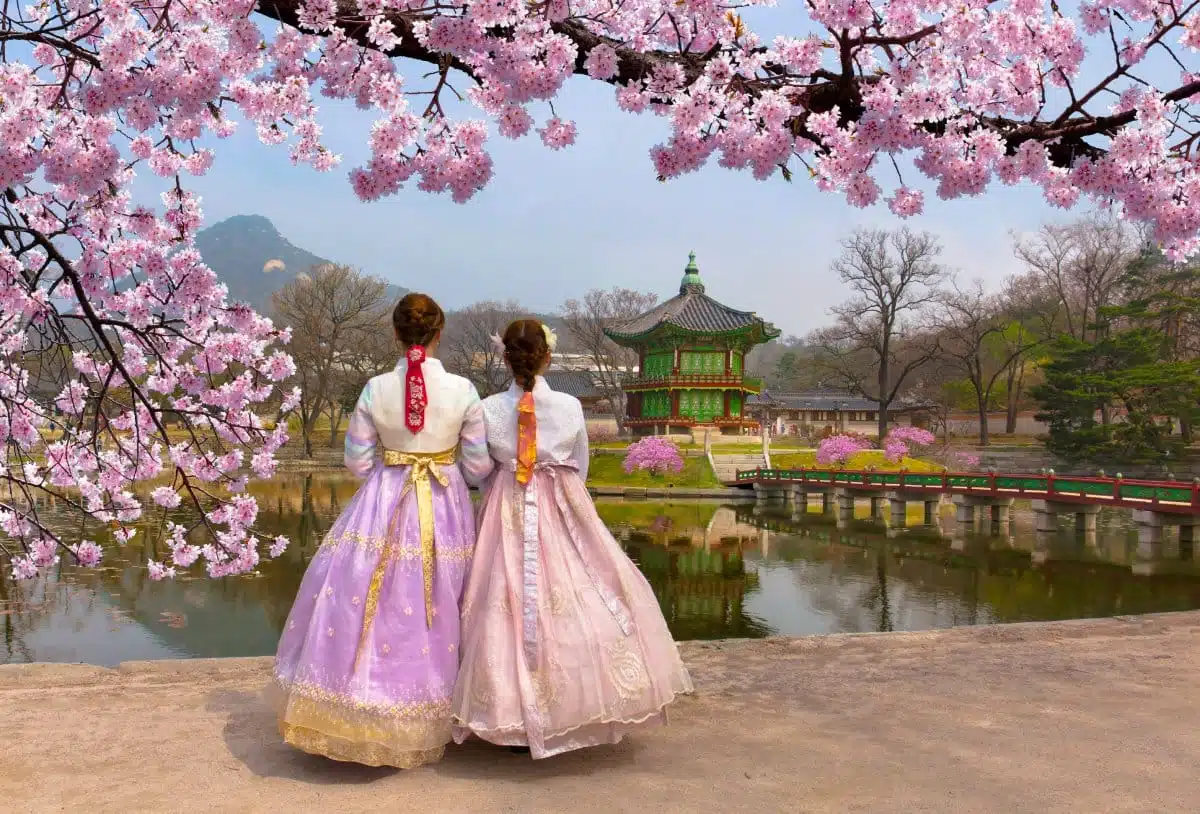Seoul, the pulsating heart of South Korea, is a city where ancient meets modern, traditional culture intertwines with cutting-edge technology, and serene natural landscapes contrast with bustling urban life. This comprehensive explores the essence of Seoul, uncovering fifteen must-visit destinations and activities that offer an authentic glimpse into the city’s soul. From historical palaces to contemporary art scenes and vibrant street markets to tranquil mountain trails, Seoul promises every traveler many experiences.
1. Gyeongbokgung Palace
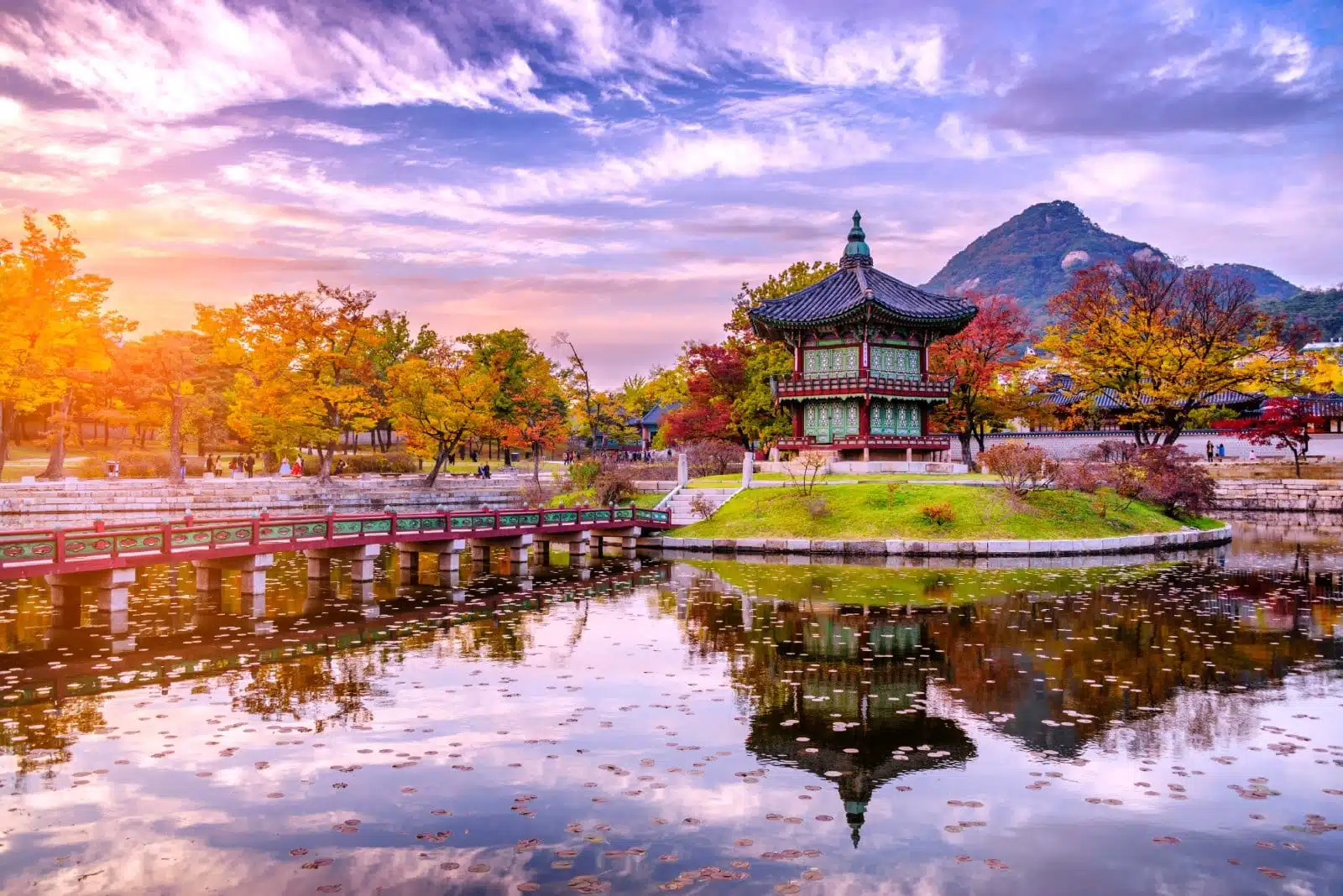
Image Credit: Shutterstock / TRAVEL TAKE PHOTOS
As the foremost royal palace of the Joseon Dynasty, Gyeongbokgung Palace is a sprawling complex representing the elegance and philosophy of traditional Korean architecture. Constructed in 1395, it has been the heart of Seoul for centuries, serving as a symbol of national sovereignty and the site of significant historical events. The palace grounds are a maze of grand halls, vast courtyards, and serene gardens, each telling a story of royal life, cultural ceremonies, and architectural innovation. Highlights include the Geunjeongjeon, the throne hall where kings were crowned, and the Hyangwonjeong Pavilion, an ethereal structure set on an island in the middle of a tranquil pond. The palace also offers a unique opportunity to see the Royal Guard Changing Ceremony, a reenactment of the royal guards’ traditional performance, showcasing their elaborate uniforms and rigorous discipline.
Insider’s Tip: Visit early in the morning to avoid crowds and witness the palace bathed in the soft sunrise light, offering a serene and almost mystical experience.
When to Travel: Spring (April to June) and autumn (September to November) are ideal, with pleasant weather and the palace gardens in full bloom or vibrant fall colors.
How to Get There: Located in the heart of Seoul, Gyeongbokgung is easily accessible by subway. Gyeongbokgung Station (Line 3) is the closest stop.
2. Bukchon Hanok Village
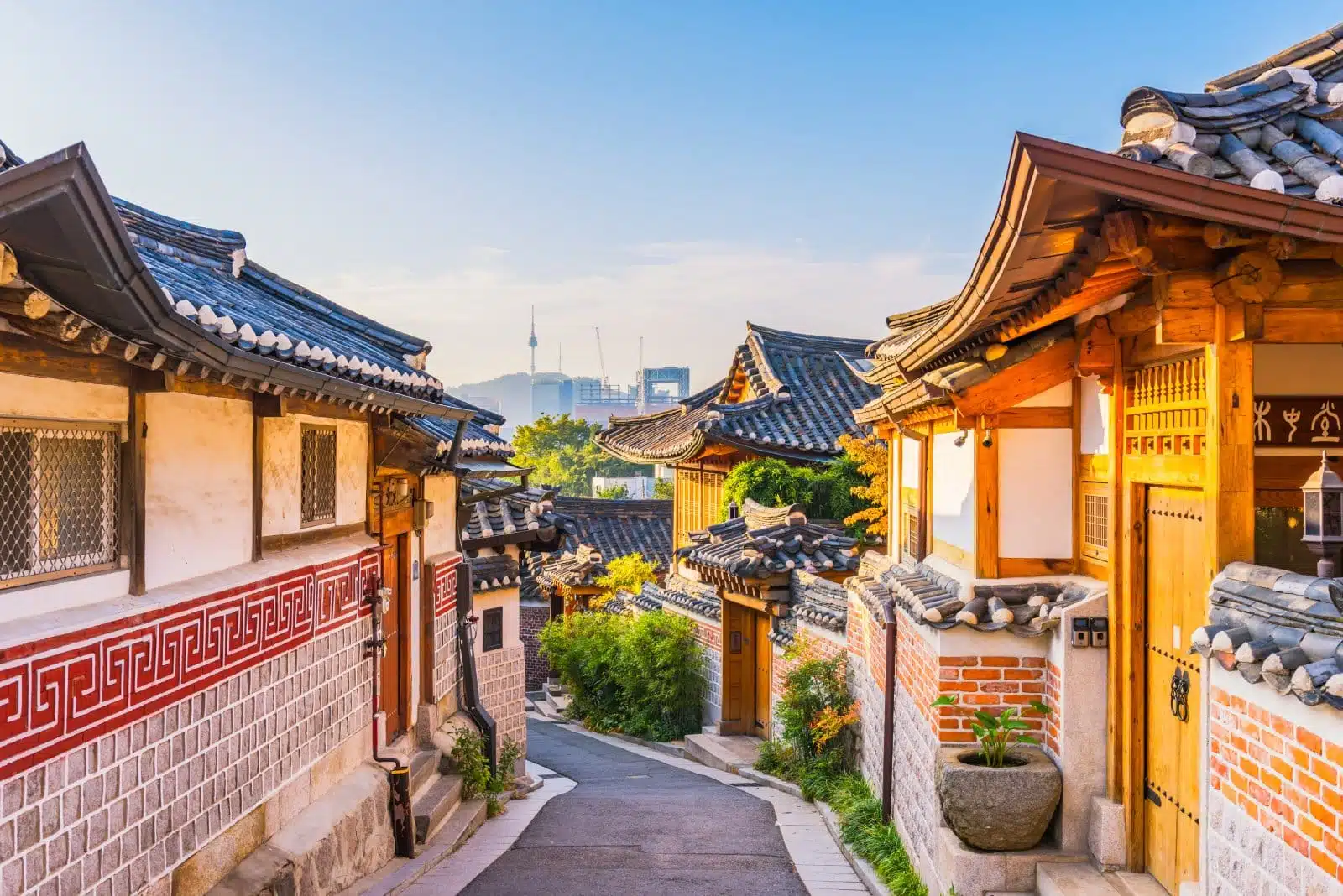
Image Credit: Shutterstock / CJ Nattanai
Tucked between the grand palaces of the Joseon Dynasty, Bukchon Hanok Village is a living museum home to hundreds of hanoks (traditional Korean houses) dating back to the 14th century. This cultural enclave offers a rare glimpse into Seoul’s historical landscape, where ancient Korea’s architectural integrity and urban planning are preserved amidst the modern city. As you wander through its narrow lanes, you’ll encounter a vibrant community where residents still live in these traditional structures, many of which now function as cultural centers, guesthouses, artisan workshops, and tea houses. The village authenticates the legacy of Korean culture and is a center for cultural exchange, offering workshops on traditional crafts, cooking classes, and cultural performances. The contrast between the ancient architecture and the modern city skyline in the distance makes for an unforgettable sight.
Insider’s Tip: Engage in a traditional Korean tea ceremony in one of the village’s tea houses for an authentic cultural experience.
When to Travel: Visit during the weekdays to avoid the weekend crowds, allowing for a more intimate exploration of the village.
How to Get There: Anguk Station (Line 3) provides the easiest access, with the village just a short walk from the station.
3. N Seoul Tower
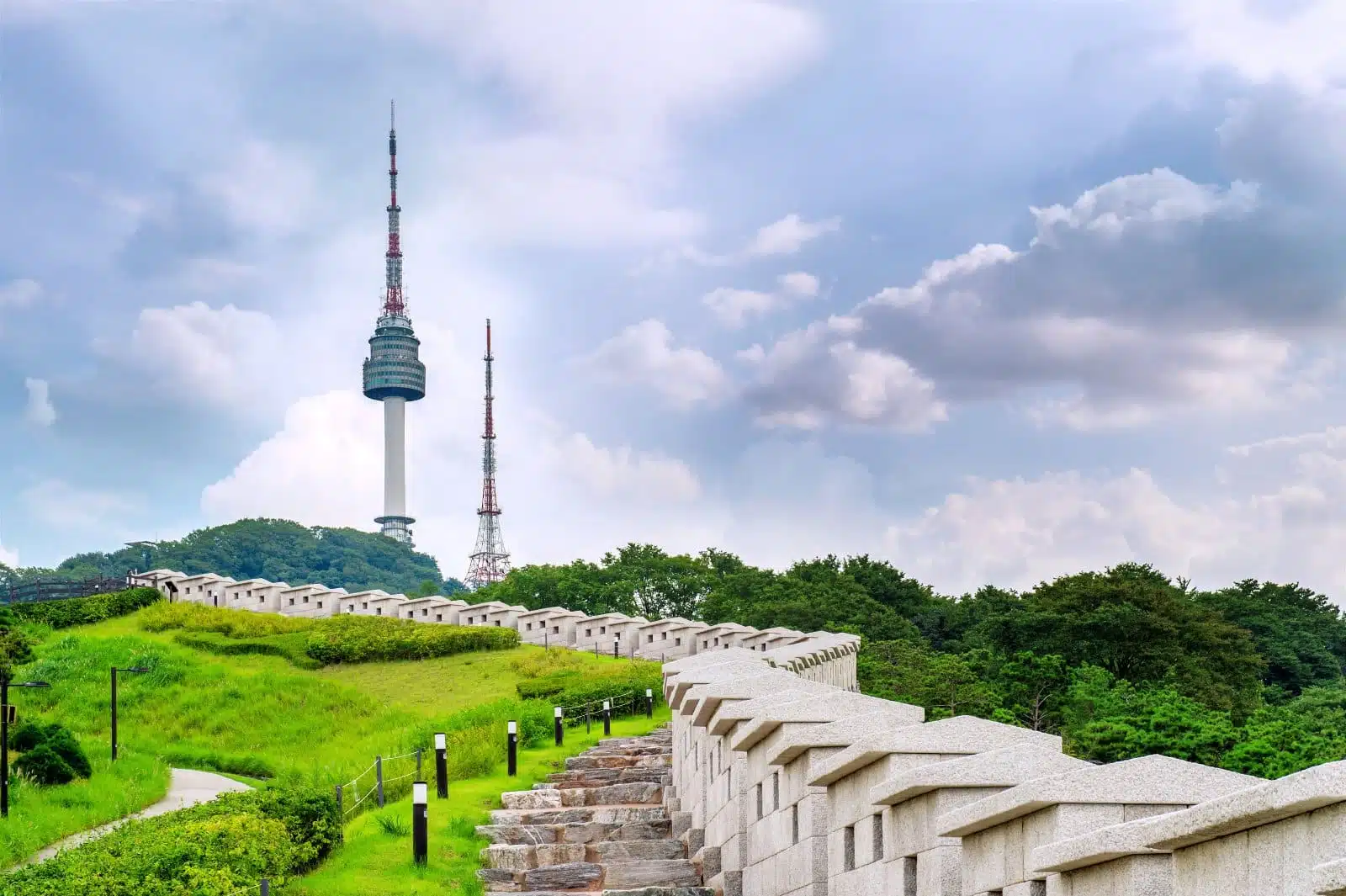
Image Credit: Shutterstock / Guitar photographer
Rising above the city on Namsan Mountain, the N Seoul Tower is a city landmark offering entertainment, dining, and the best panoramic views of Seoul. Since its opening in 1980, the tower has become synonymous with Seoul’s skyline, visible from almost every point in the city. The tower’s observation decks provide a bird’s-eye view of the sprawling urban landscape, the winding Han River, and the surrounding mountains. The “Locks of Love” fence, where couples leave padlocks as a symbol of affection, adds a personal touch to the architectural feat. For those looking to dine with a view, the N Grill revolving restaurant offers gourmet cuisine with an ever-changing backdrop of the city below. The tower is not just a place to see Seoul but to experience the city from a new perspective.
Insider’s Tip: Visit at dusk to witness the city transition from day to night, with the skyline lighting up in a dazzling display.
When to Travel: Clear days in spring or autumn offer the best visibility and comfortable temperatures for enjoying the outdoor areas.
How to Get There: Take the Namsan cable car from the base of Namsan Mountain, or for the more adventurous, hike up the Namsan Circular Road for a rewarding approach to the tower.
4. Myeongdong Shopping Street
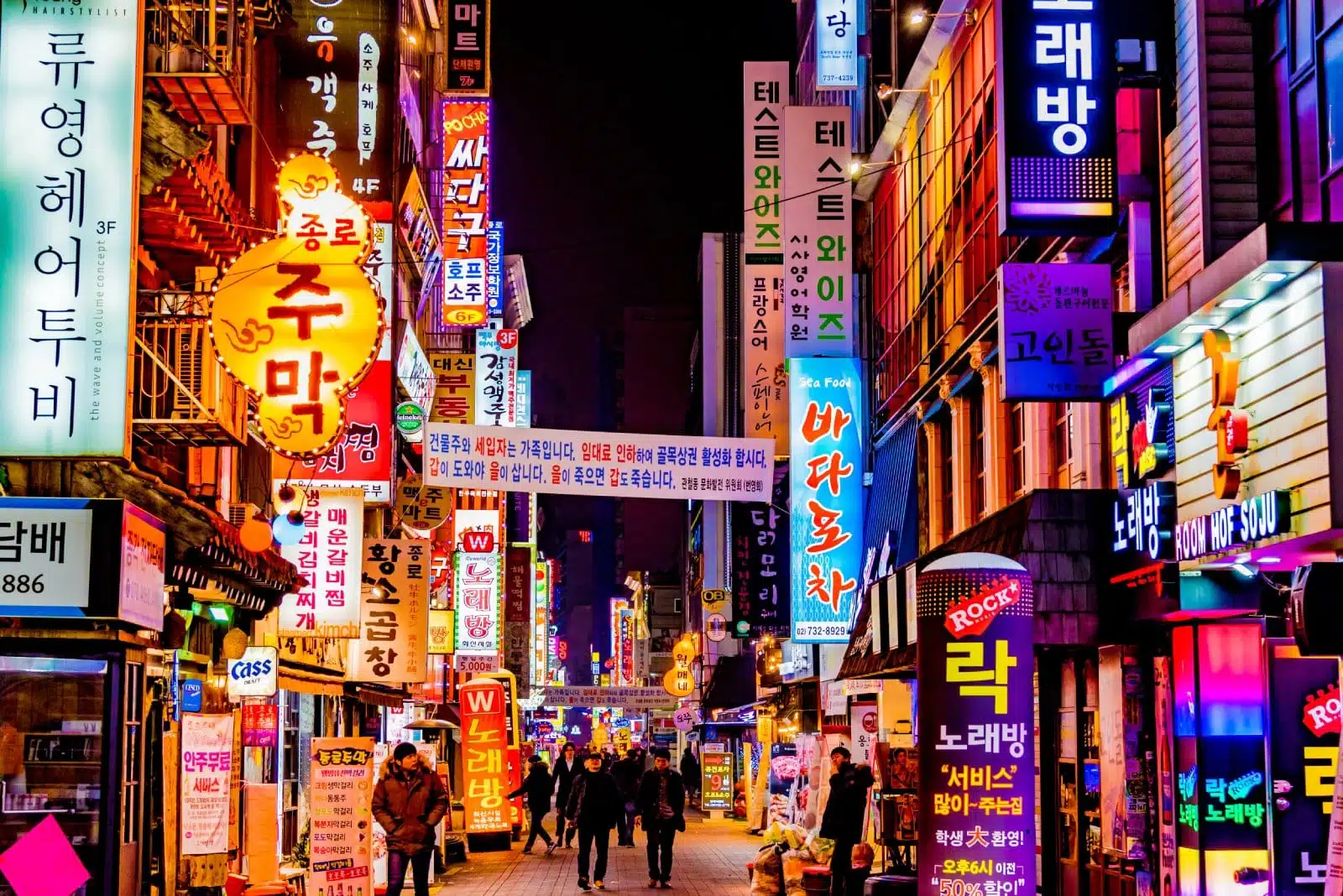
Image Credit: Shutterstock / DiegoMariottini
Myeongdong is Seoul’s premier shopping district, buzzing with energy from dawn till dusk. This vibrant neighborhood is a haven for fashion enthusiasts and beauty product aficionados, offering an extensive range of shops from high-end brands to affordable Korean cosmetics. Beyond shopping, Myeongdong is famous for its street food, with vendors serving delicious local snacks like tteokbokki (spicy rice cakes), odeng (fish cakes), and freshly made egg bread. The area also hosts several cultural and street performances, adding to the lively atmosphere that defines Myeongdong.
Insider’s Tip: For the best deals on cosmetics, visit shops later in the evening when you’re more likely to receive extra samples and discounts as stores try to meet their daily sales targets.
When to Travel: Weekdays are less crowded, offering a more relaxed shopping experience. Visit during the Seoul Shopping Festival in spring or autumn for special events and discounts.
How to Get There: Myeongdong Station (Line 4) drops you right in the heart of the shopping district, making it easily accessible by subway.
5. Insadong
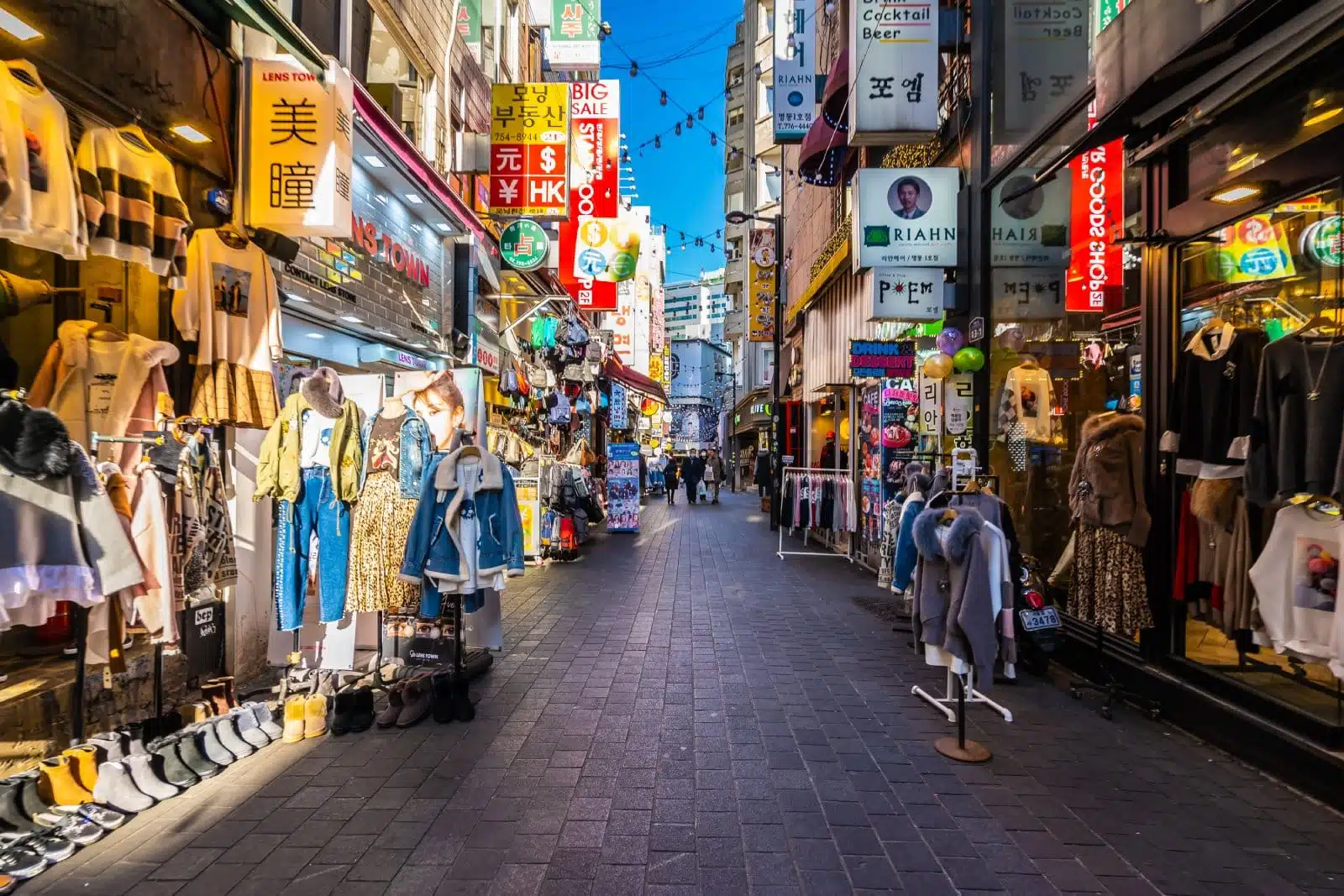
Image Credit: Shutterstock / Lifestyle Travel Photo
Insadong is a cultural district that serves as the focal point for Korean traditional culture and crafts. The main street and its alleys are lined with antique shops, art galleries, traditional tea houses, and restaurants serving authentic Korean cuisine. Insadong is also the best place in Seoul to find souvenirs, ranging from handmade paper goods to intricate ceramics. On weekends, the street becomes pedestrian-only, hosting traditional performances and street food vendors, creating a festive atmosphere that celebrates Korea’s heritage.
Insider’s Tip: Visit Ssamziegil, a unique shopping complex within Insadong, for its array of craft shops, art installations, and a rooftop garden that offers a quiet escape from the bustling streets below.
When to Travel: Any season offers a rich experience, but spring and autumn provide comfortable weather for strolling through the district’s outdoor attractions.
How to Get There: Anguk Station (Line 3) is a short walk away from Insadong, making it easily accessible from anywhere in Seoul.
6. Changdeokgung Palace and Huwon (Secret Garden)
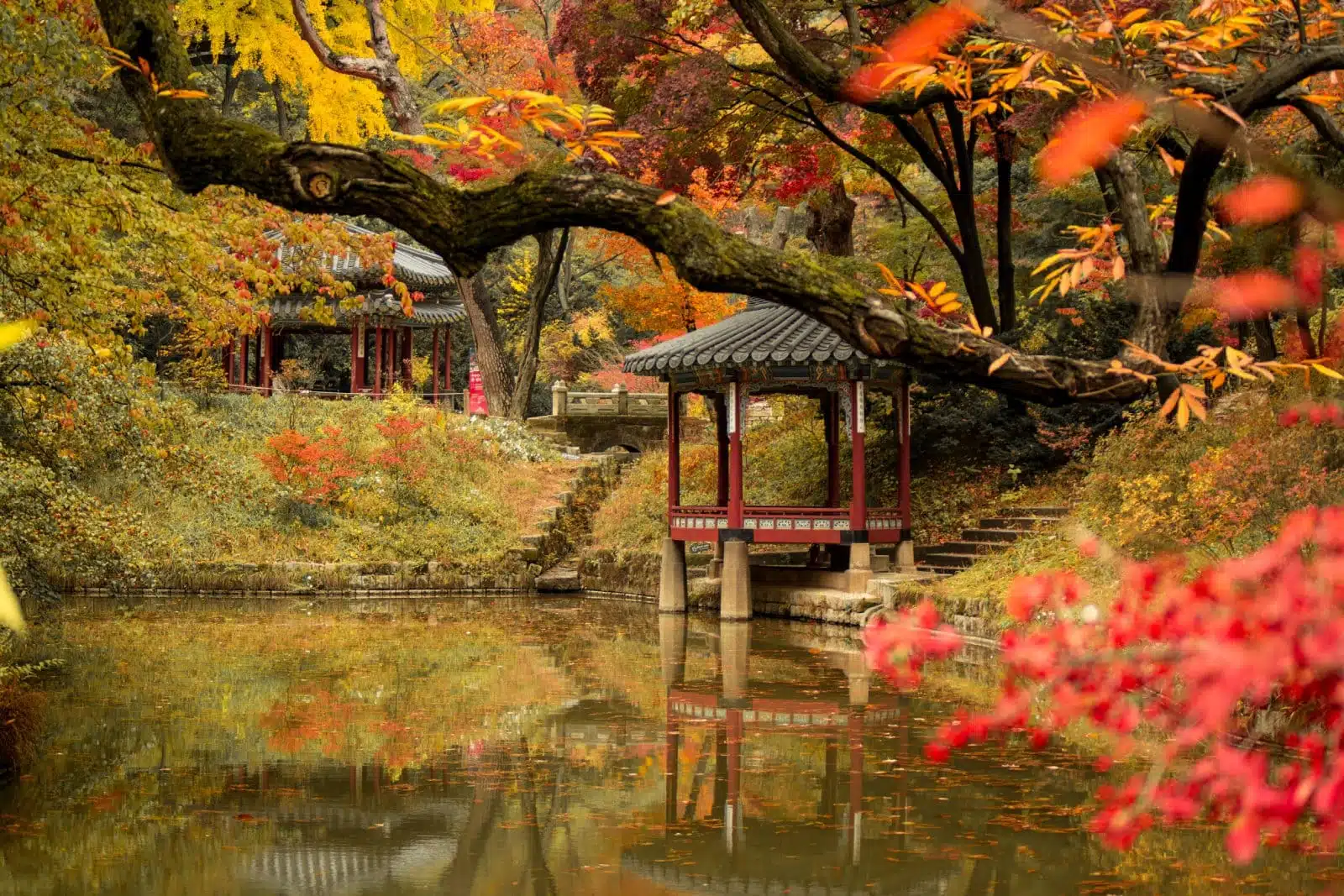
Image Credit: Shutterstock / HAEWON JANG
Changdeokgung Palace, a UNESCO World Heritage site, is renowned for its harmonious blend of traditional Korean architecture and natural environment. The palace’s rear garden, Huwon (Secret Garden), is a masterpiece of Korean garden design, featuring a beautiful array of pavilions, ponds, and landscaped lawns set against the backdrop of the city’s modern skyline. This palace complex offers a serene retreat from the urban hustle and bustle, allowing visitors to step back in time and enjoy the tranquility of its historical surroundings.
Insider’s Tip: Join a guided tour of Huwon to gain deeper insights into the garden’s design philosophy and historical significance, as independent entry is restricted.
When to Travel: The garden is particularly stunning in autumn when the foliage turns vibrant shades of red and yellow, though every season has its charm.
How to Get There: Jongno 3(sam)-ga Station (Lines 1, 3, and 5) provides the closest subway access, with a short walk leading to the palace entrance.
7. Hongdae

Image Credit: Shutterstock / Sociopath987
Hongdae, named after the Hongik University, is a youthful neighborhood known for its vibrant nightlife, indie music scene, and artsy vibe. The area has live music venues, clubs, bars, and cafes, each offering a unique experience. During the day, the streets of Hongdae come alive with street performers and artists, while at night, the area transforms into one of Seoul’s most popular entertainment districts. The Hongdae Free Market is a must-visit for those interested in handmade crafts and interacting with local artists on weekends.
Insider’s Tip: Explore the side streets and back alleys of Hongdae to discover hidden gems, including small art galleries, themed cafes, and boutique fashion stores that are off the beaten path.
When to Travel: While Hongdae offers a lively atmosphere year-round, the neighborhood is incredibly vibrant in the spring and fall when the weather is ideal for exploring its outdoor markets and street performances.
How to Get There: Hongik University Station (Line 2) is the gateway to Hongdae, placing you right amid its bustling streets.
8. Dongdaemun Design Plaza (DDP)
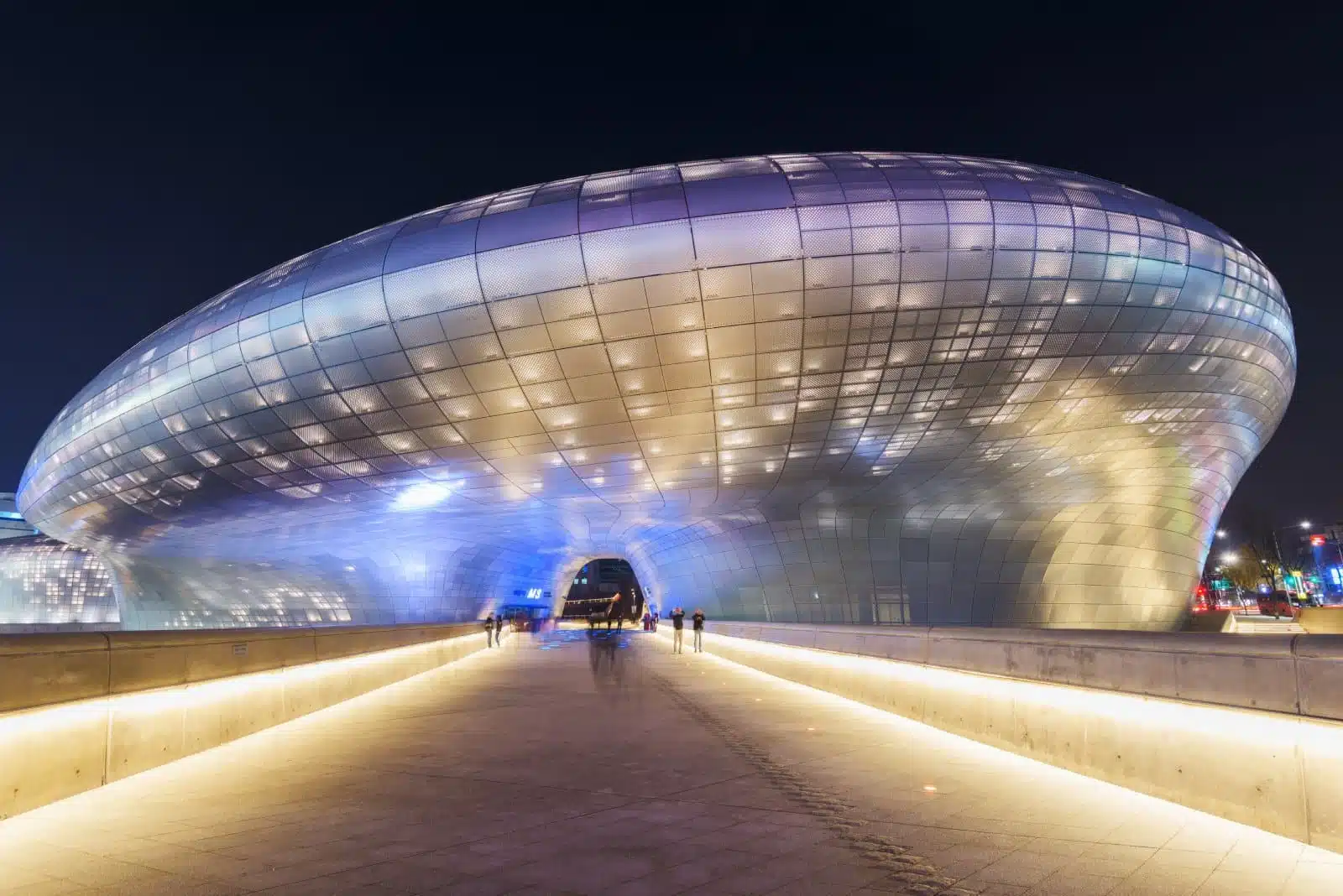
Image Credit: Shutterstock / CJ Nattanai
The Dongdaemun Design Plaza, designed by the renowned architect Zaha Hadid, is a futuristic cultural complex that has become an iconic landmark in Seoul. The DDP hosts a variety of exhibitions, fashion shows, forums, and other events that showcase the latest trends in design and technology. Its unique architecture, characterized by flowing curves and illuminated façades, creates a visually stunning backdrop for exploring Seoul’s contemporary arts scene. The complex also includes a design market, museums, and galleries, making it a central hub for creativity and innovation.
Insider’s Tip: Visit the DDP at night when its LED-covered exterior is fully lit, offering a spectacular view and a perfect backdrop for photography enthusiasts.
When to Travel: The DDP is a year-round destination, with each season bringing different exhibitions and events that cater to a wide range of interests.
How to Get There: Dongdaemun History & Culture Park Station (Lines 2, 4, and 5) provides direct access to the DDP, making it easily reachable from any part of Seoul.
9. Cheonggyecheon Stream
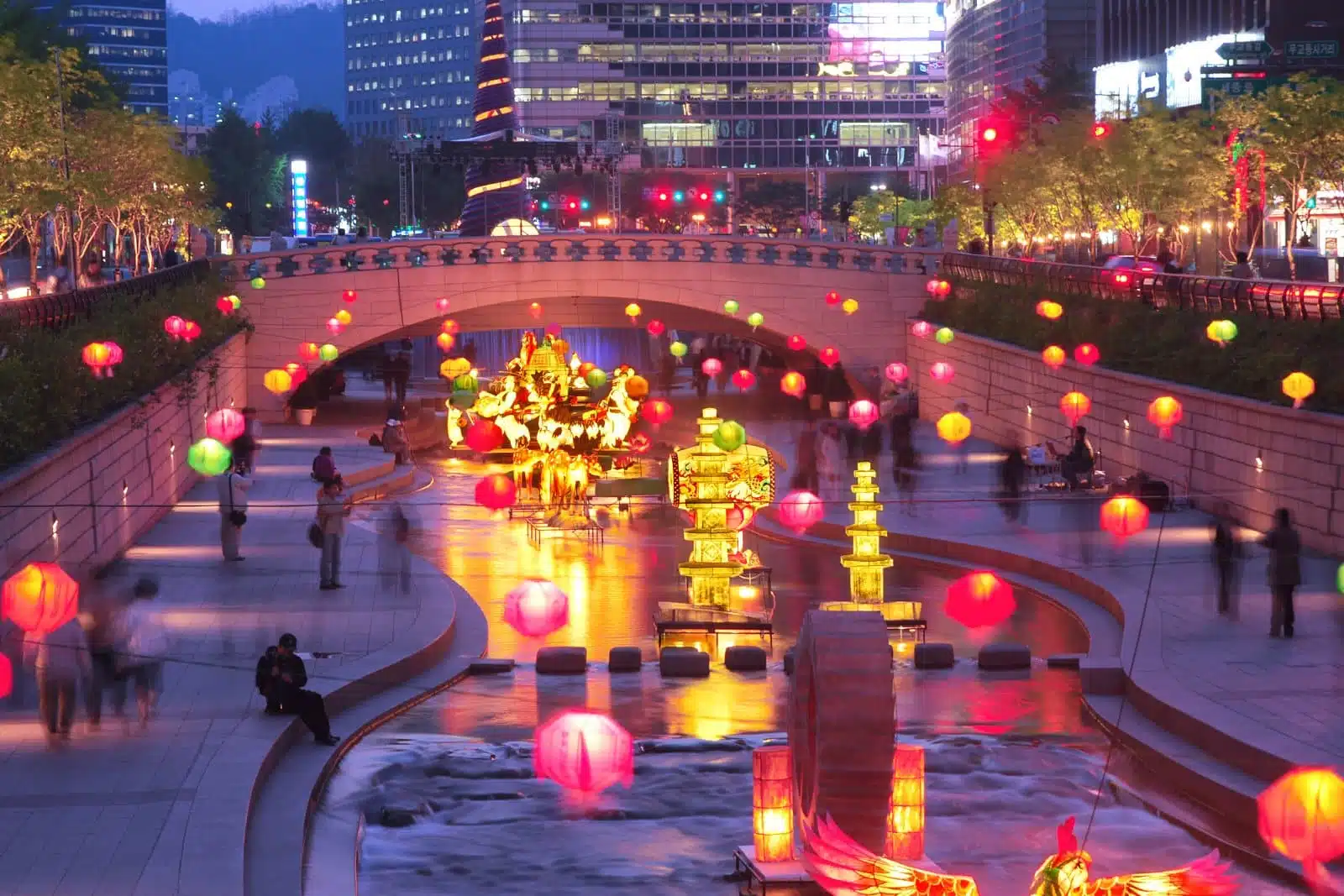
Image Credit: Shutterstock / Johnathan21
Cheonggyecheon Stream is a 10.9-kilometer-long modern public recreation space in downtown Seoul, offering a peaceful escape from the city’s hustle and bustle. The stream features walking paths, waterfalls, and numerous bridges, each with its own design and character. Along its length, you’ll find art installations, seasonal flower displays, and even stepping stones allowing visitors to cross from one side. Cheonggyecheon is a testament to Seoul’s commitment to urban renewal and environmental sustainability, transforming a once-overlooked waterway into a cherished public space.
Insider’s Tip: Visit the Lantern Festival in November, when the stream is adorned with hundreds of colorful lanterns, creating a magical atmosphere that highlights Korean folklore and history.
When to Travel: Cheonggyecheon Stream is accessible and enjoyable all year round, but visiting in spring or autumn offers the most pleasant weather for a stroll along its banks.
How to Get There: The stream is easily accessible from multiple points. Gwanghwamun Station (Line 5) and City Hall Station (Lines 1 and 2) are convenient starting points for exploration.
10. Lotte World Tower
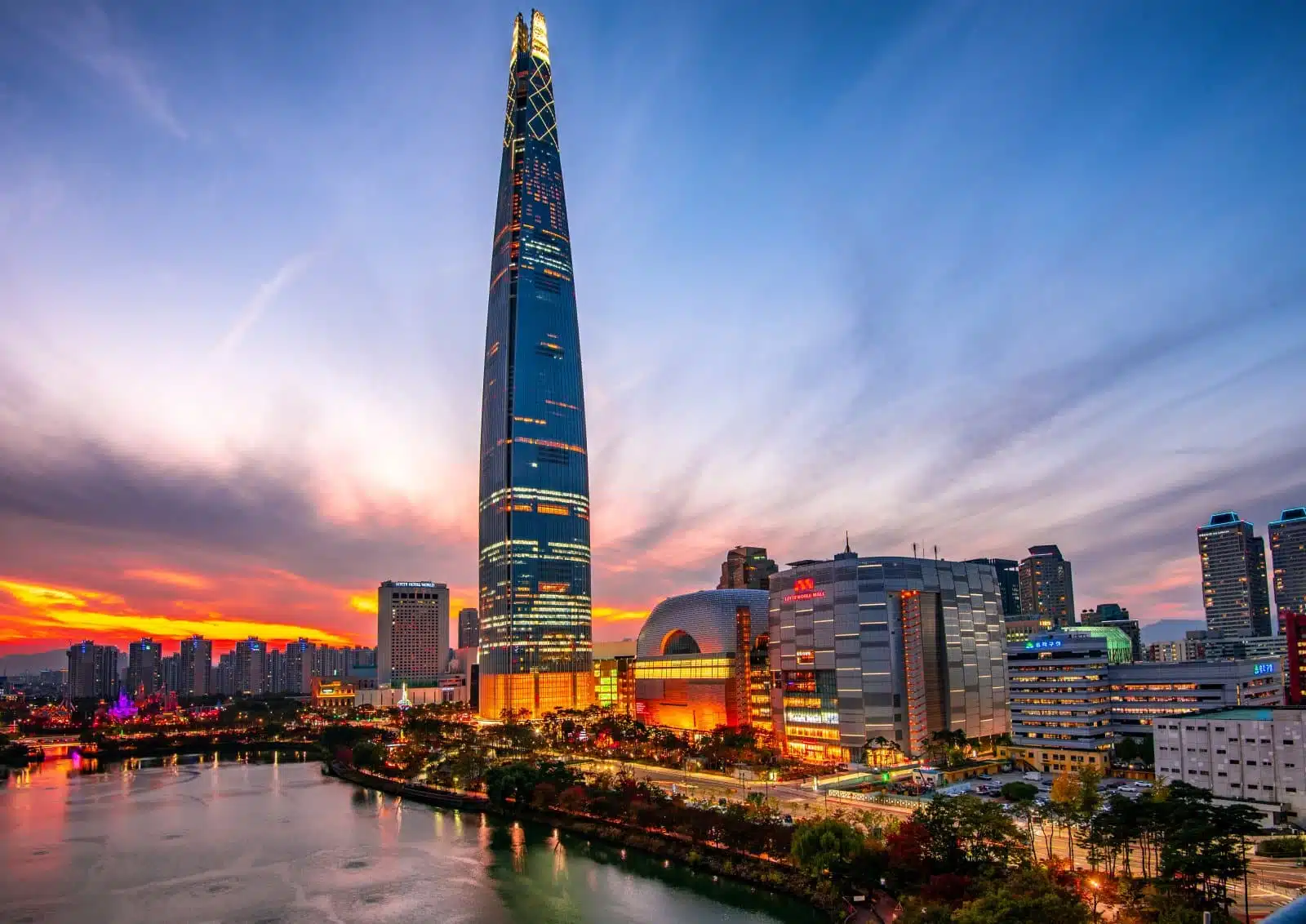
Image Credit: Shutterstock / sayan uranan
Dominating the Seoul skyline, the Lotte World Tower is the tallest building in South Korea and the fifth tallest in the world. This architectural marvel features a sleek, tapered design that houses a luxury hotel, offices, residences, and the Lotte World Mall. The tower’s observation deck, Seoul Sky, offers breathtaking 360-degree views of the entire city and beyond. Visitors can also experience the thrill of standing on one of the world’s highest glass-bottomed observation decks, providing a unique perspective on the urban landscape below.
Insider’s Tip: For a truly unforgettable experience, visit the observation deck at sunset to witness the spectacular sight of Seoul’s city lights coming to life against the backdrop of the setting sun.
When to Travel: The tower and observation deck are open year-round, but clear days offer the best visibility for panoramic views. Spring and autumn provide the clearest skies and most comfortable temperatures for enjoying the view.
How to Get There: Jamsil Station (Lines 2 and 8) is directly connected to Lotte World Tower, making it easily accessible from anywhere in Seoul.
11. Samcheong-dong
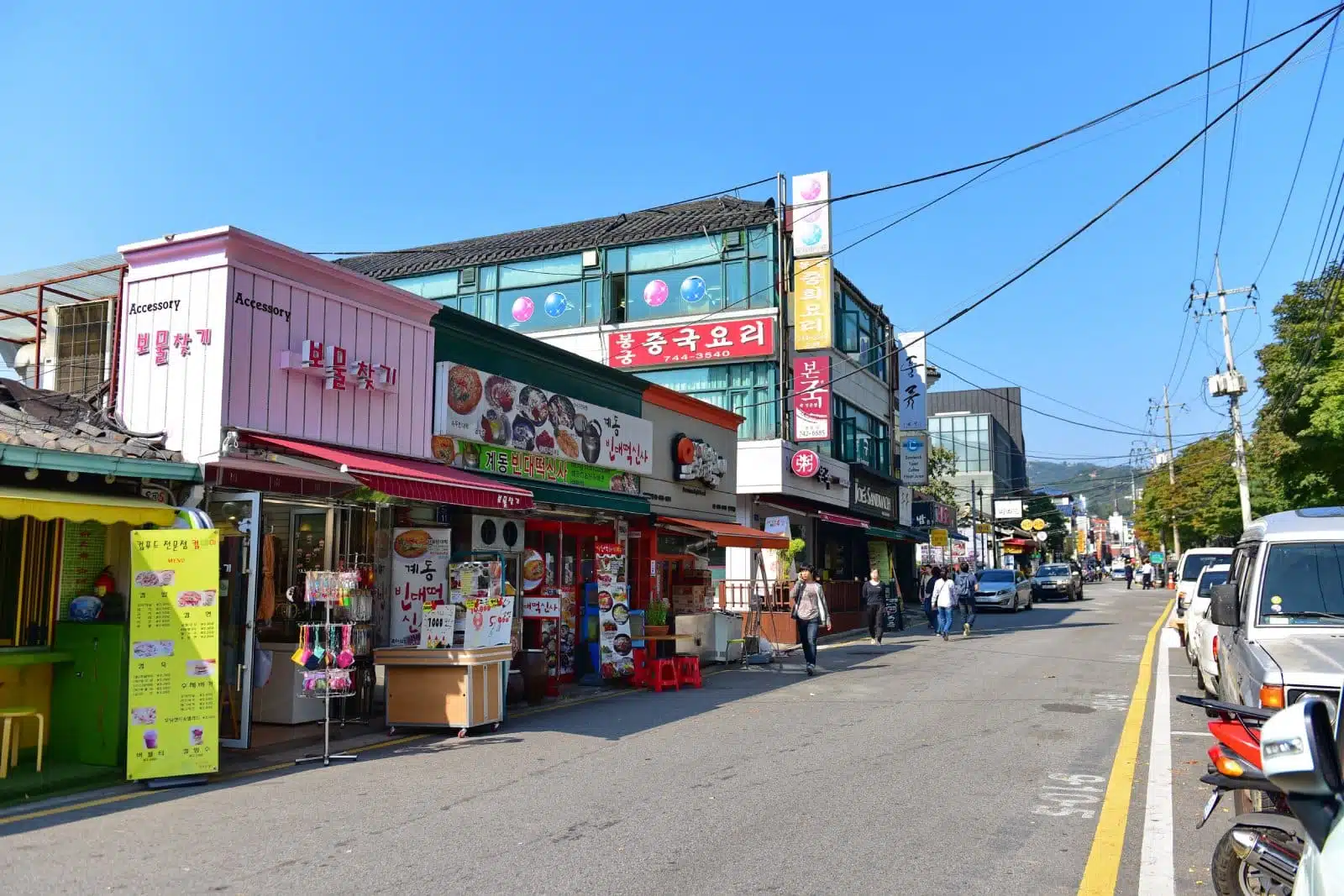
Image Credit: Shutterstock / Jordan Tan
Samcheong-dong is a charming neighborhood known for its fusion of traditional and modern Korean culture. Lined with hanok houses transformed into cafes, boutiques, and art galleries, this area offers a tranquil yet vibrant atmosphere. Samcheong-dong is also home to some of Seoul’s most unique museums, including the Museum of Modern and Contemporary Art. The neighborhood’s picturesque streets, adorned with art installations and seasonal decorations, make it a favorite for leisurely strolls among locals and tourists alike.
Insider’s Tip: Take the time to explore the side alleys and back streets of Samcheong-dong, where you’ll find hidden cafes and shops less frequented by tourists. These spots often offer a more intimate and authentic experience.
When to Travel: Samcheong-dong is beautiful throughout the year, but it is particularly enchanting in spring when the cherry blossoms are in bloom and in autumn when the leaves change color, adding a magical touch to the already picturesque streets.
How to Get There: Anguk Station (Line 3) is the nearest subway station, from which Samcheong-dong is a short walk away. The neighborhood’s central location near Bukchon Hanok Village and Gyeongbokgung Palace makes it an easy addition to exploring Seoul’s historical sites any day.
12. Namdaemun Market
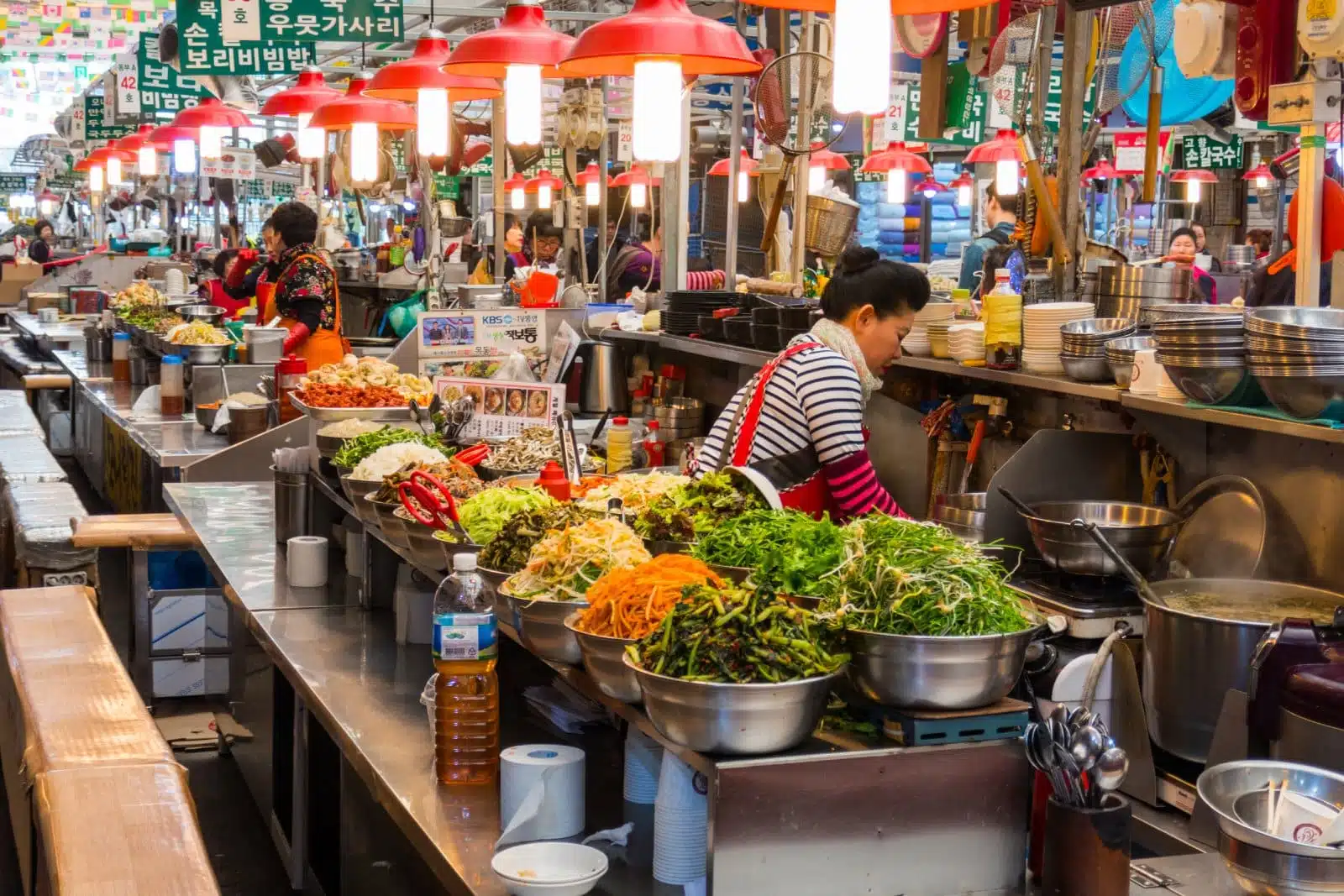
Image Credit: Shutterstock / StockStudio Aerials
Namdaemun Market, Korea’s largest traditional market, offers an authentic glimpse into the bustling commercial life of Seoul. With thousands of shops selling everything from Korean street food and clothing to electronics and souvenirs, Namdaemun is a paradise for shoppers looking for bargains. The market is also a great place to sample a wide variety of Korean cuisine, with numerous food stalls and small restaurants serving traditional dishes.
Insider’s Tip: For the best experience, visit Namdaemun Market early in the morning when the vendors set up their stalls. This is when you’ll get a true sense of the market’s vibrant atmosphere and have the opportunity to enjoy some of the freshest food offerings.
When to Travel: Namdaemun Market is open year-round, but visiting on a weekday can help avoid the larger crowds that flock to the market on weekends.
How to Get There: Hoehyeon Station (Line 4) is the closest subway stop to Namdaemun Market. The market’s central location, near Seoul Station and Myeongdong, makes it easily accessible from various parts of the city.
13. Inwangsan Mountain
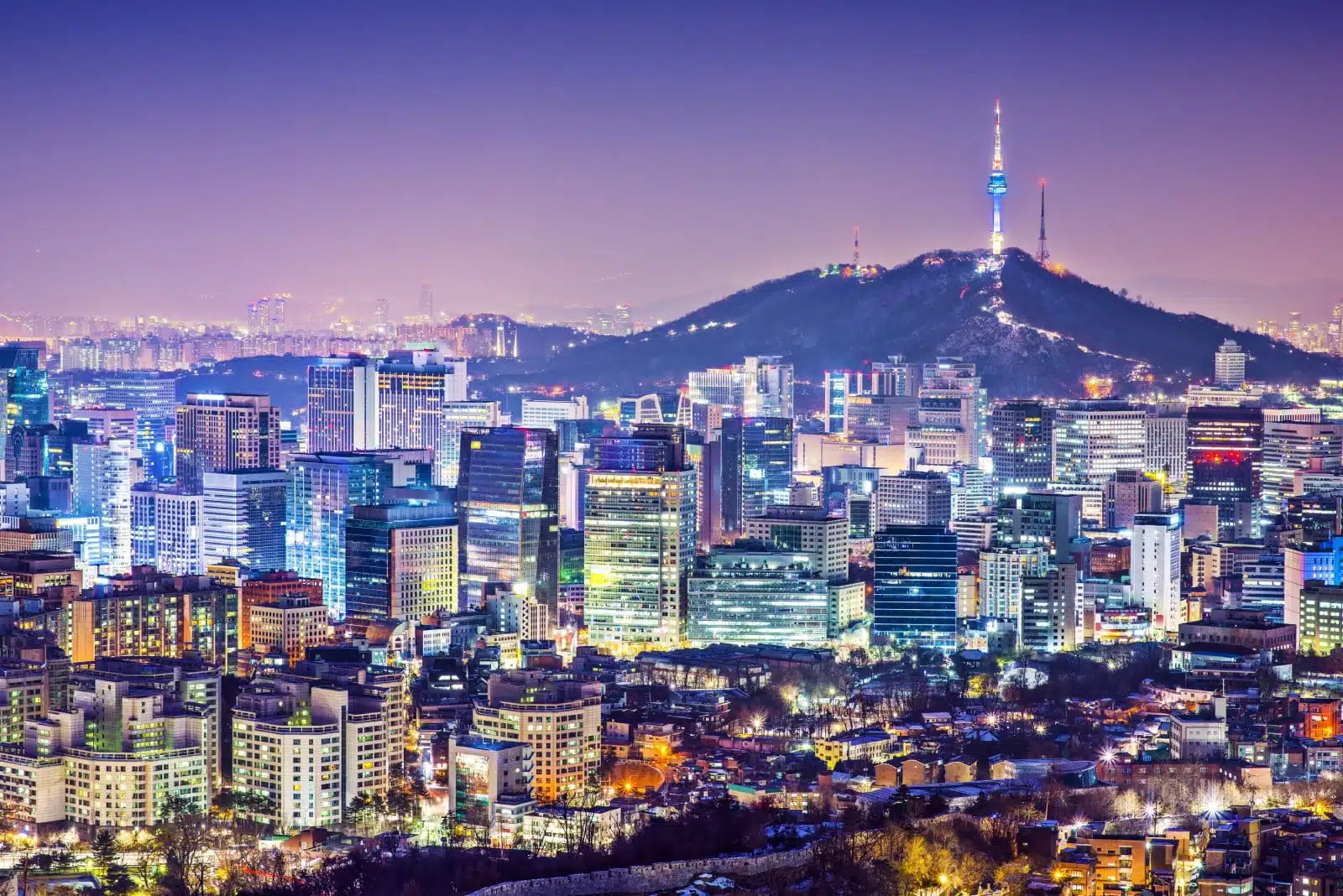
Image Credit: Shutterstock / ESB Professional
For those seeking a natural escape within the city, Inwangsan Mountain offers hiking trails with stunning views of Seoul. Known for its rocky terrain and shamanistic shrines, Inwangsan uniquely blends natural beauty and cultural significance. The hike to the summit is relatively easy, making it accessible for most fitness levels. It also rewards hikers with panoramic views of the city’s skyline, including landmarks like N Seoul Tower and Gyeongbokgung Palace.
Insider’s Tip: Bring a camera to capture the breathtaking views from the top, especially during sunrise or sunset when the city is bathed in golden light. Also, keep an eye out for the shamanistic shrines along the trail, which offer a glimpse into Korea’s spiritual traditions.
When to Travel: Inwangsan Mountain is a great hiking destination throughout the year, but the views are particularly spectacular in autumn when the foliage adds vibrant colors to the landscape.
How to Get There: Gyeongbokgung Station (Line 3) is a convenient starting point from which you can take a bus or taxi to the base of Inwangsan Mountain or enjoy a scenic walk through the city to reach the trailhead.
14. Seoullo 7017
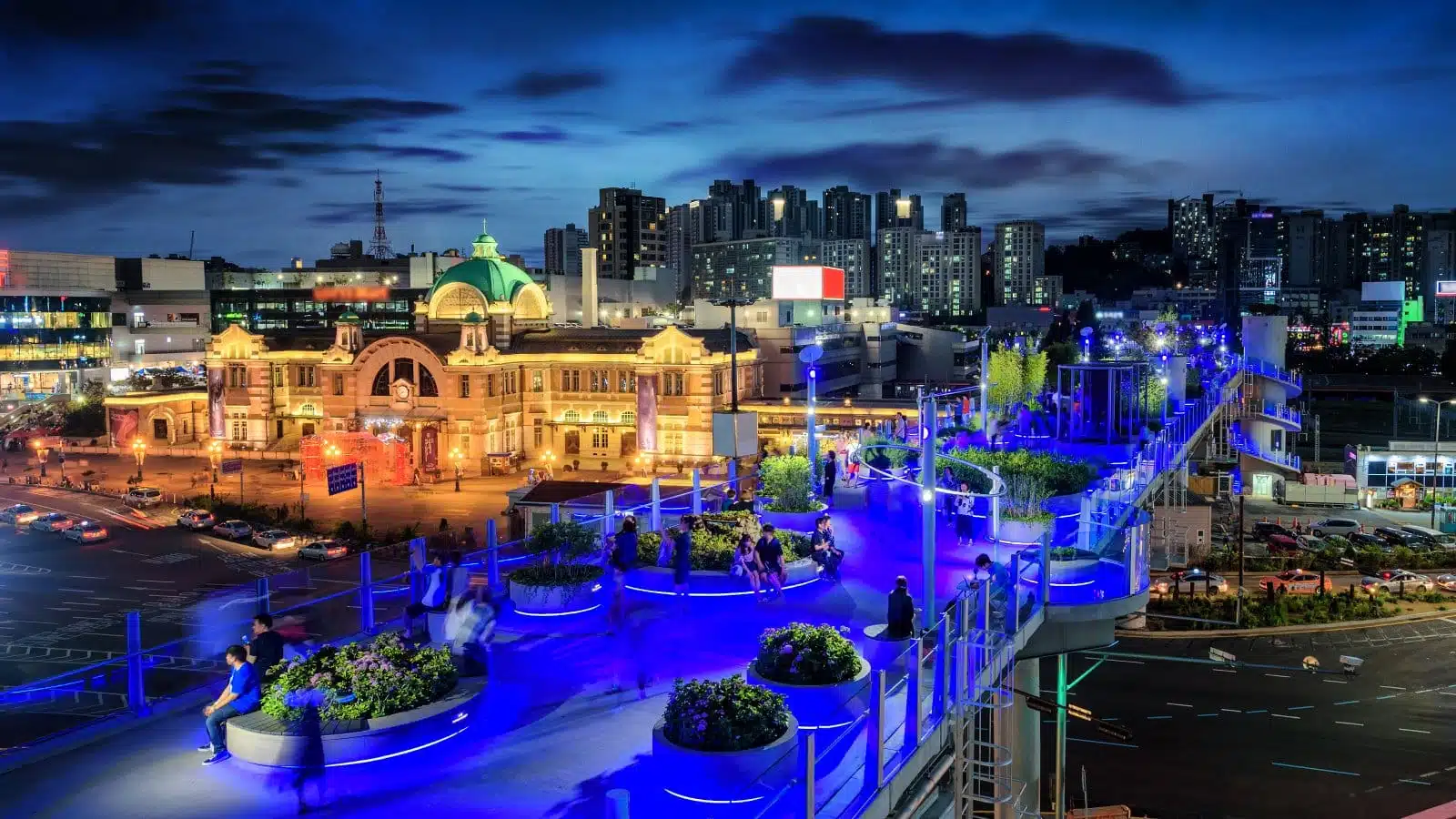
Image Credit: Shutterstock / TRAVEL TAKE PHOTOS
Seoullo 7017 is an elevated linear park transformed from a former highway overpass into a vibrant public space. This urban renewal project features walking paths lined with over 24,000 plants, cafes, and performance spaces, creating a green oasis amid the city. Seoullo 7017 is a place for leisure and relaxation and serves as a pedestrian link between several of Seoul’s major attractions, including Namdaemun Market and Seoul Station.
Insider’s Tip: Visit Seoullo 7017 in the evening when the walkway is illuminated with soft lighting, creating a romantic atmosphere perfect for a stroll. Look out for the various art installations and pop-up events that frequently occur along the park.
When to Travel: Seoullo 7017 can be enjoyed year-round, with each season bringing its own charm to the park. Spring and autumn offer the most comfortable temperatures for outdoor activities.
How to Get There: Seoul Station (Lines 1, 4, and Gyeongui-Jungang) provides direct access to Seoullo 7017, making it easily reachable from any part of the city.
15. Itaewon
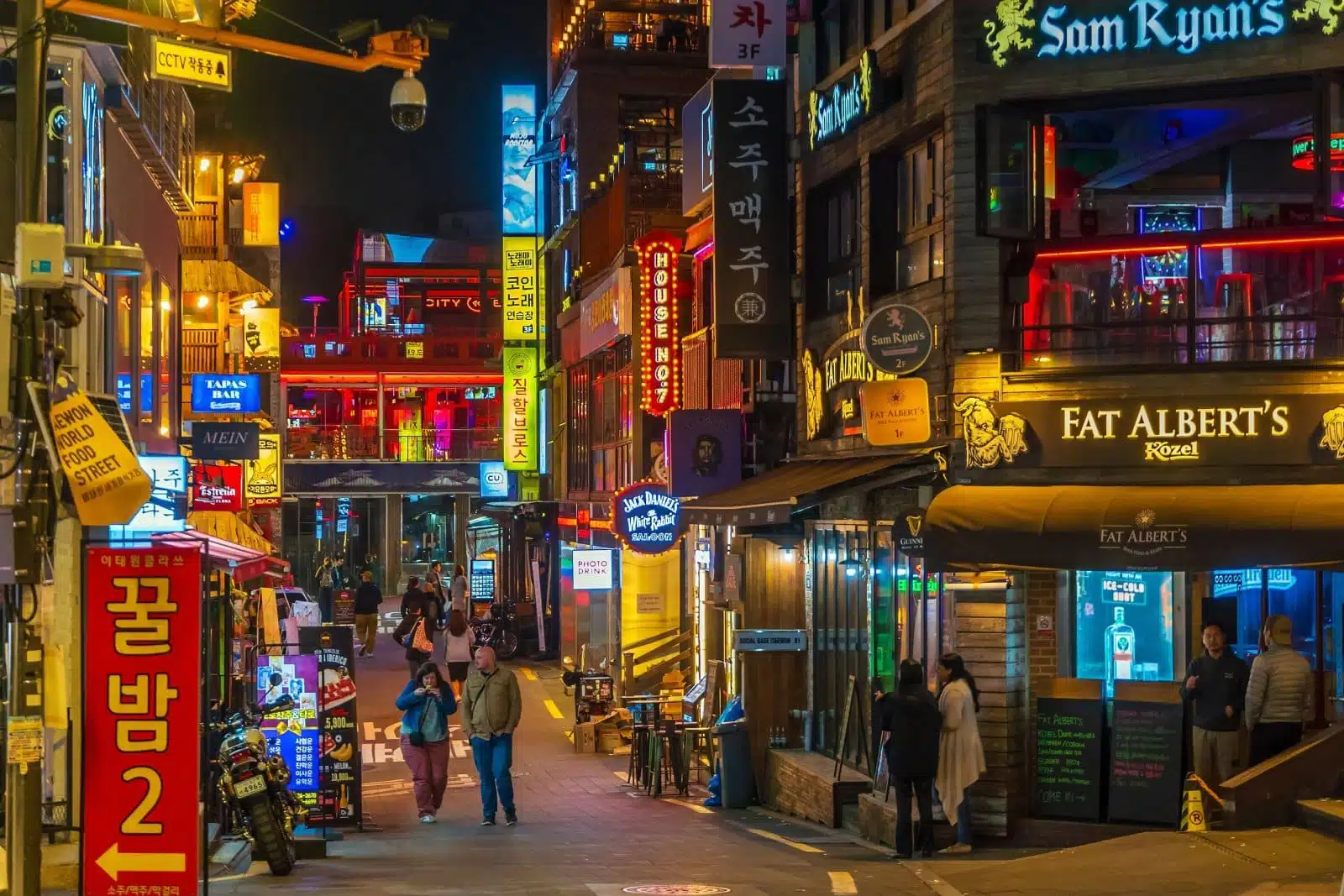
Image Credit: Shutterstock / f11photo
Itaewon is Seoul’s most international district, known for its diverse culture, cuisine, and nightlife. The neighborhood is a melting pot of cultures, offering various restaurants, bars, and clubs catering to locals and expats. Itaewon is also famous for its custom tailoring shops and international food market, making it a go-to destination for those looking to experience a different side of Seoul.
Insider’s Tip: Explore the backstreets of Itaewon to discover unique boutiques, international cuisine, and hidden bars that offer a more local experience away from the main tourist areas.
When to Travel: Itaewon is lively throughout the year, but the neighborhood comes alive during the evening and on weekends when the bars and clubs are at their most vibrant.
How to Get There: Itaewon Station (Line 6) is the main gateway to the neighborhood, placing you right in the heart of this bustling district.
The Bottom Line
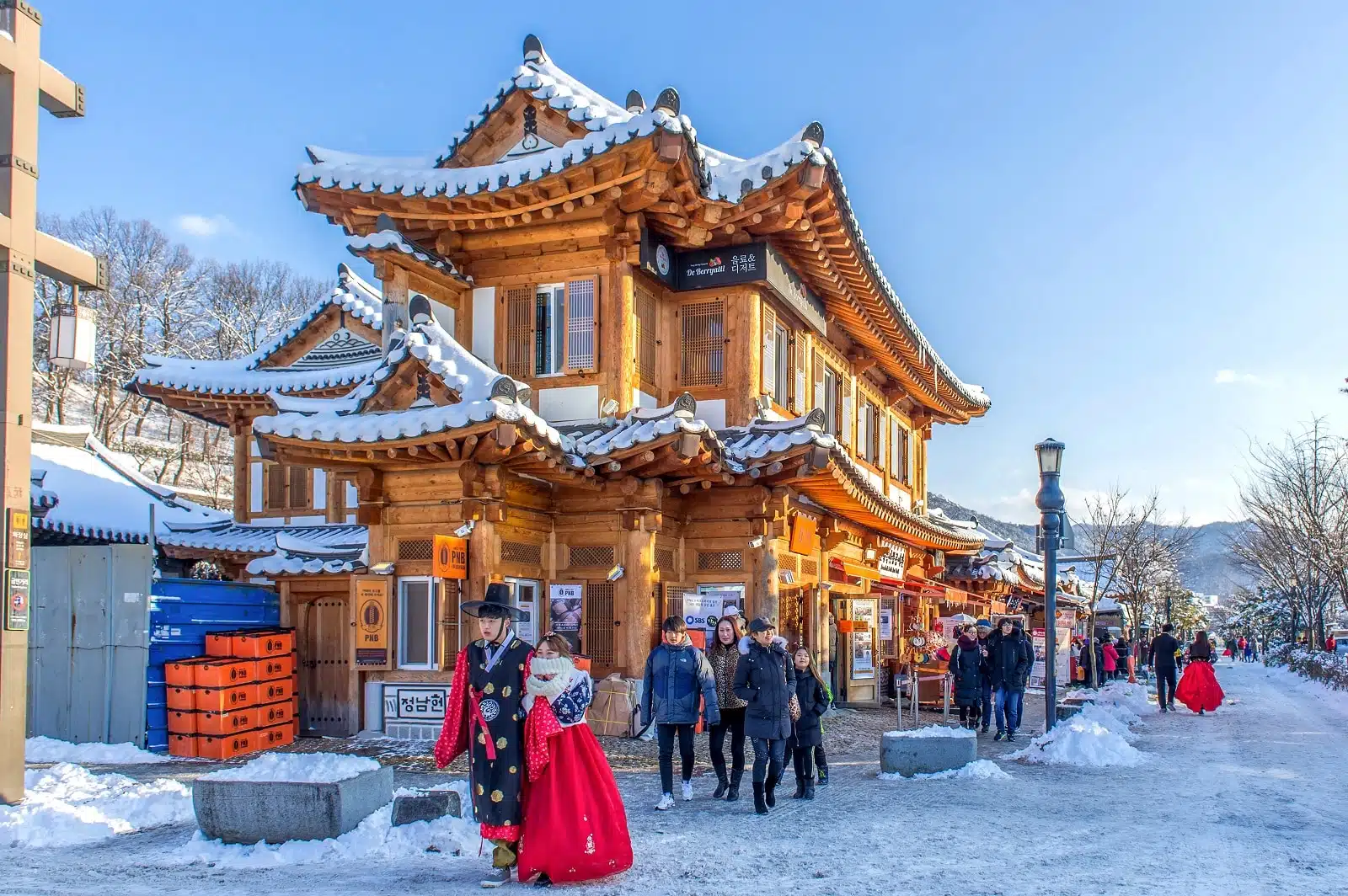
Image Credit: Shutterstock / Guitar photographer
Seoul is a city of endless discovery, where every corner holds a new experience waiting to be explored. Whether you’re delving into the depths of history at Gyeongbokgung Palace, shopping in the trendy streets of Myeongdong, or hiking up Inwangsan Mountain for a view of the city, Seoul offers a diverse range of activities that cater to all interests. As you plan your journey, remember to travel with an open heart and mind, ready to embrace this dynamic city’s unique culture and vibrant spirit.
More From The Green Voyage
12 Best Practices for Sustainable Travel in 2024 – How to Travel With Minimal Environmental Impact
Unlocking Hotel Perks – A Traveler’s Guide to Maximizing Hotel Reward Programs for Optimal Benefits
Travel Hacks for Frequent Flyers – 6 Tips and Tricks to Make the Best of Air Travel
The post A City Guide to Seoul first appeared on The Green Voyage.
Featured Image Credit: Shutterstock / Kampon.
For transparency, this content was partly developed with AI assistance and carefully curated by an experienced editor to be informative and ensure accuracy.
